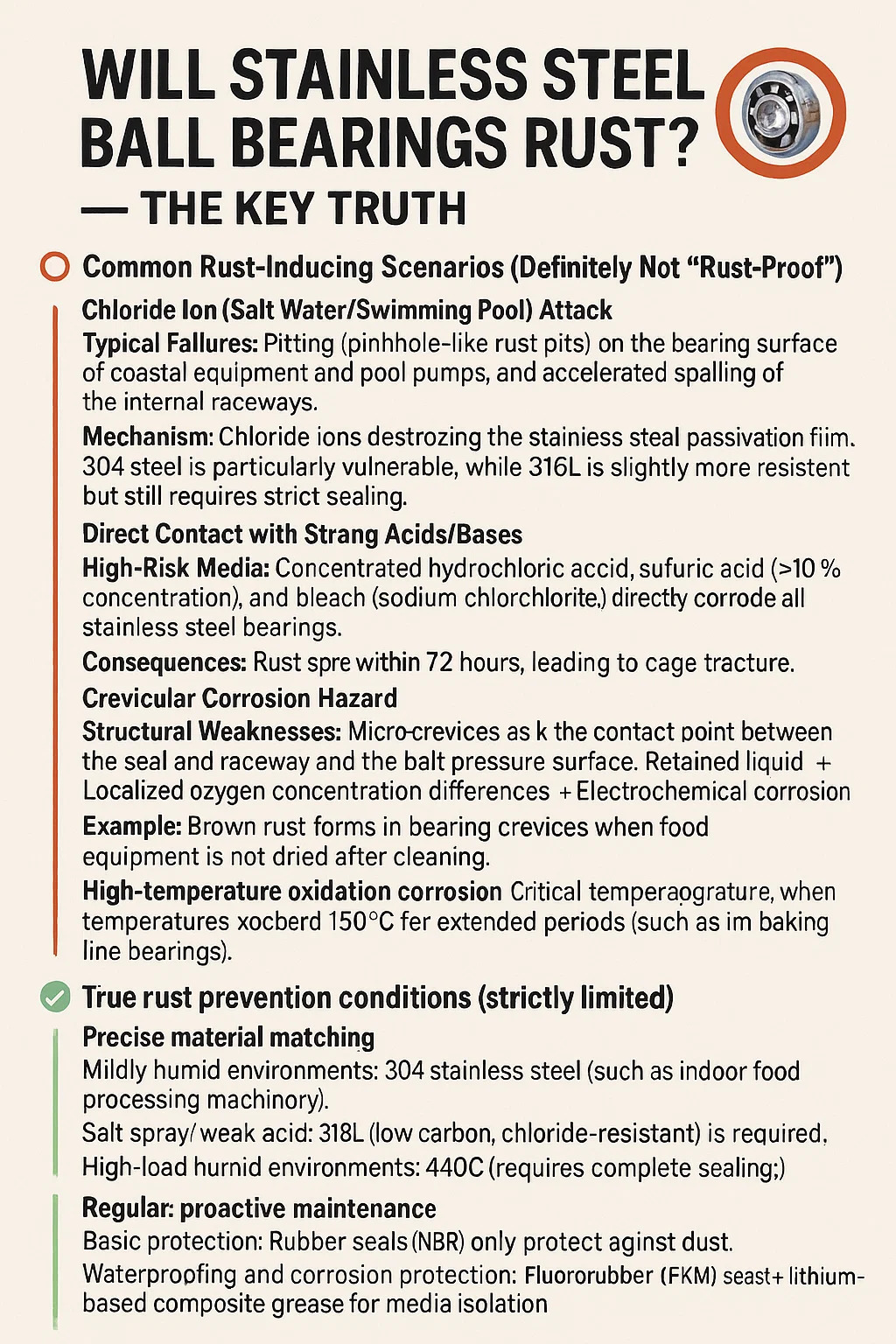 2025.09.22
2025.09.22
 Industry News
Industry News
Will stainless steel ball bearings rust? — The Key Truth
⭕ Common Rust-Inducing Scenarios (Definitely Not "Rust-Proof")
--Chloride Ion (Salt Water/Swimming Pool) Attack
Typical Failures: Pitting (pinhole-like rust pits) on the bearing surface of coastal equipment and pool pumps, and accelerated spalling of the internal raceways.
Mechanism: Chloride ions destroy the stainless steel passivation film. 304 steel is particularly vulnerable, while 316L is slightly more resistant but still requires strict sealing.
--Direct Contact with Strong Acids/Bases
High-Risk Media: Concentrated hydrochloric acid, sulfuric acid (>10% concentration), and bleach (sodium hypochlorite) directly corrode all stainless steel bearings.
Consequences: Rust spreads within 72 hours, leading to cage fracture.
--Crevicular Corrosion Hazard
Structural Weaknesses: Micro-crevices such as those at the contact point between the seal and raceway and the bolt pressure surface. Retained liquid → Localized oxygen concentration differences → Electrochemical corrosion.
Example: Brown rust forms in bearing crevices when food equipment is not dried after cleaning.
--High-temperature oxidation corrosion
Critical temperature: When temperatures exceed 150°C for extended periods (such as in baking line bearings), the surface chromium oxide layer fails, yellowing, and then red rust spreads.
--Improper maintenance induces corrosion
Critical mistake: Using carbon steel tools to install bearings causes iron chips to embed into the stainless steel, creating a galvanic effect that accelerates corrosion.
Lubrication failure: Low-quality grease emulsifies in water, losing its barrier function.
⭕ True rust prevention conditions (strictly limited)
--Precise material matching
Mildly humid environments: 304 stainless steel (such as indoor food processing machinery).
Salt spray/weak acid: 316L (low-carbon, chloride-resistant) is required.
High-load humid environments: 440°C (requires complete sealing).
--Sealing technology is not optional
Basic protection: Rubber seals (NBR) only protect against dust.
Waterproofing and corrosion protection: Fluororubber (FKM) seals + lithium-based composite grease for media isolation.
--Regular, proactive maintenance
After cleaning: Blow out water stains in crevices with compressed air. Relubrication: Refill with food-grade waterproof grease (such as Klüber HySyn FG 34) every 6 months.
